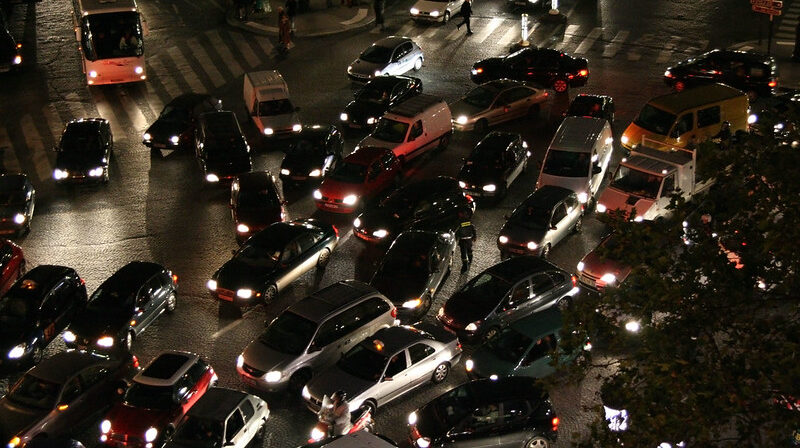Transport accounts for a growing share of global emissions. The EU should lead a push for clean travel at home and internationally
Transportation is the connective tissue of our society. It brings us prosperity, but also rapidly rising greenhouse gas emissions and other air pollutants, threatening the health of the planet and its people.
We must dramatically increase fossil fuel-free transport to avert a deepening climate crisis.
Globally, transportation causes over a fifth of all carbon emissions and at the current growth rate, this will rise to two-fifths within a decade.
And yet, a concrete target for clean transport is absent from the upcoming UN climate summit, Cop28, in Dubai.
Saudi Arabia, Russia urge World Bank to keep funding fossil fuels
It is time the EU took the driver’s seat – both by cleaning up its own transportation system and leading the push at Cop28 to get all countries to shift away from fossil-fuel powered vehicles.
Within Europe, road transport accounts for almost one-fifth of greenhouse gas emissions and is increasing.
Heavy-duty vehicles (trucks, vans and buses) are responsible for 28% of those emissions, despite only accounting for 2% of vehicles on the road.
Vehicle emission targets
Next week’s EU Council of Environment Ministers will discuss new emission targets for such vehicles as well as Europe’s negotiating objectives for the upcoming UN climate conference in Dubai.
It will be a first test for the new EU Commissioner for Climate, Maroš Šefčovič, to safeguard an ambitious EU Green Deal as currently the transport sector is a major stumbling block of the EU’s climate and zero pollution objectives for 2030 and 2050.
Furthermore, a concrete global goal to significantly lower the use of fossil fuels for the transportation sector is lacking in the international climate negotiations.
The Council should support a target on doubling the share of fossil-fuel free transport by 2030. To put the world on track to limit warming to 1.5C, a multi-solutions mobility strategy is needed; more efficiency in vehicles and systems, a shift to public transport, cycling and innovative urban planning to avoid short rides in the first place, and more electrification.
Going electric
There are three approaches to achieve such ambition:
First, all global sales of new vehicles need to be electric for buses and two- and three-wheelers by 2030, cars by 2035, and trucks by no later than 2040.
Translating this to the EU means it would need to end the sale of all new trucks and buses with combustion engines by 2035 to reach its own target of climate neutrality by 2050, as heavy-duty vehicles have an average life span of 15 – 18 years.
The proposal discussed at the upcoming EU Environment Council sets out a CO2 emission reduction target for trucks of 45% by 2030 (compared to 2019 levels) and a 90% reduction for 2040.
These emission targets are significant but fall short of what is needed to put the heavy-duty sector on track with Europe’s climate commitments.
Green Climate Fund ambition at risk after ‘disappointing’ pledges
The European Parliament, as co-legislator, can spearhead a more ambitious clean vehicle amendment later in the year.
Promote alternatives to cars
Second, governments need to bend the curve on the growth of vehicle travel in this decade, by moving more trips to electric public transport, walking, biking, and micro-mobility by 2030.
This will require constructing bicycle networks, dramatically scaling up the quality and provision of public transport and smarter urban planning.
While several EU countries are leading on many of these points, Europe could still do better.
With the EU’s motorization rate growing by 18% between 2010-2020, the car is still often the default option. Metro rails and electric buses emit one-fifth the c
Read More

